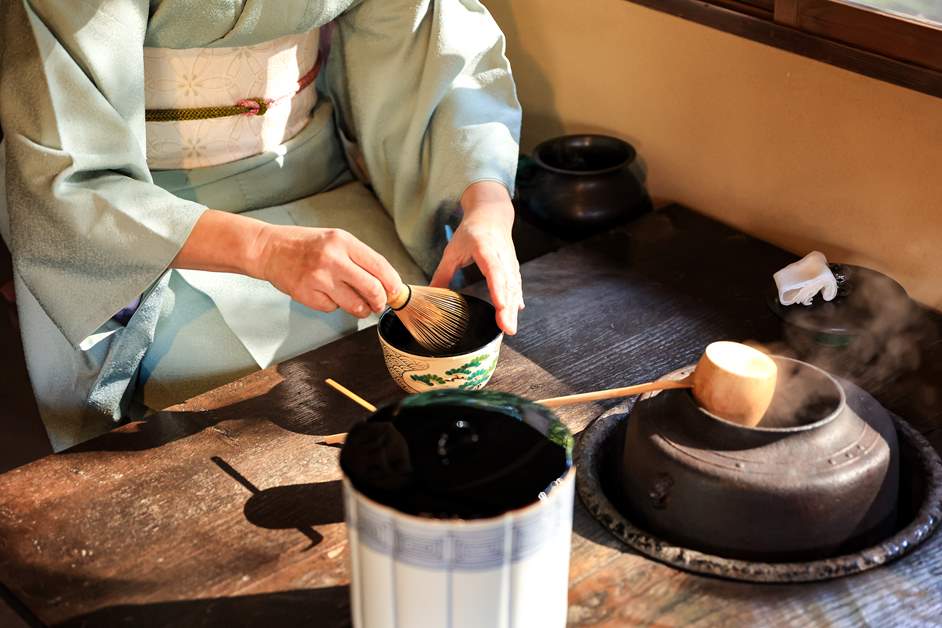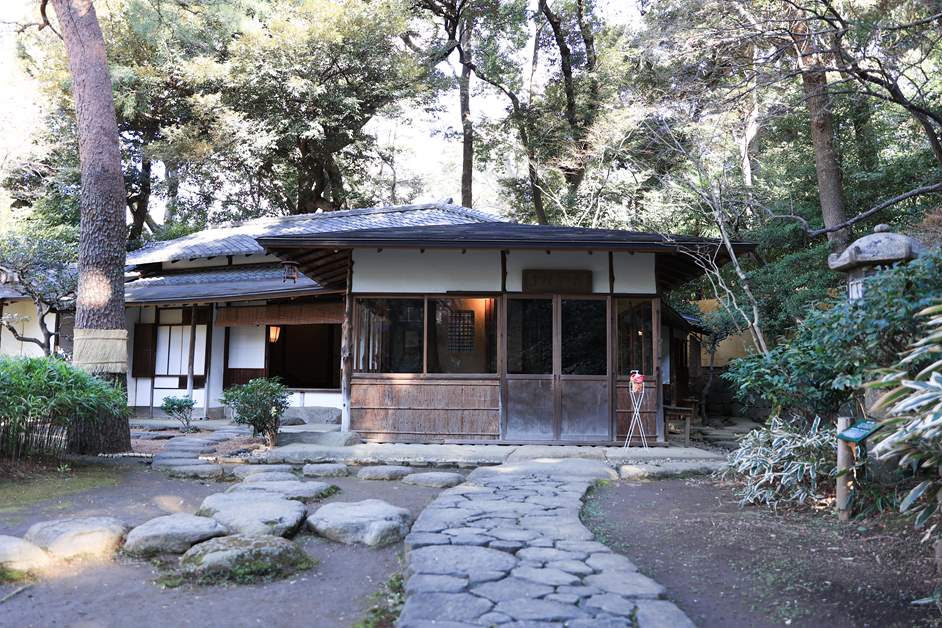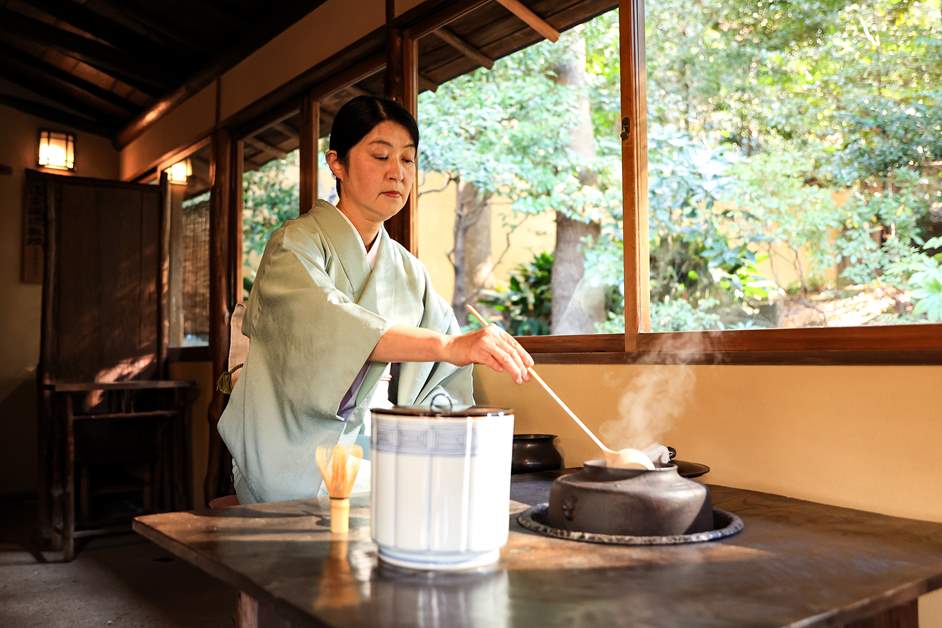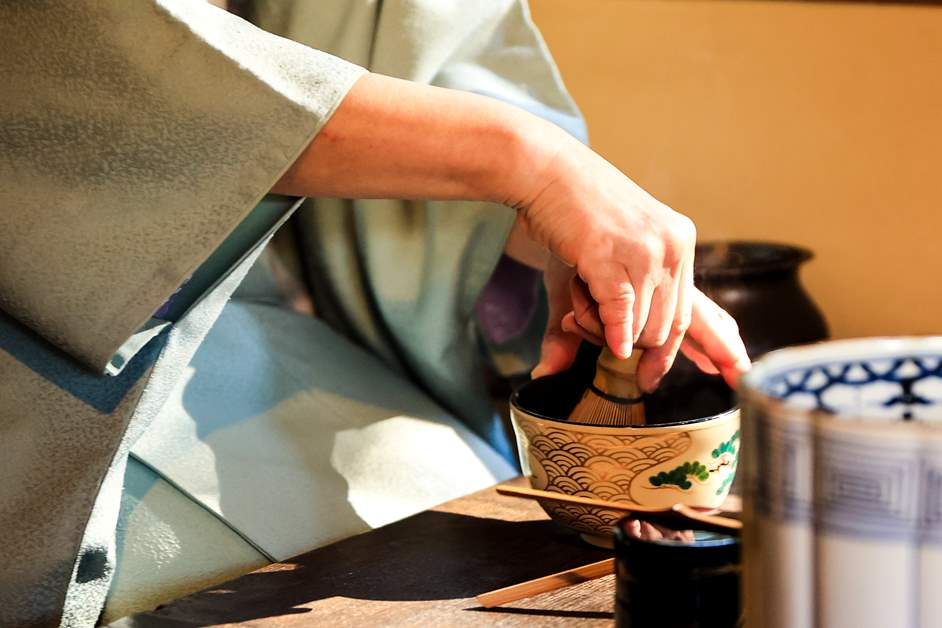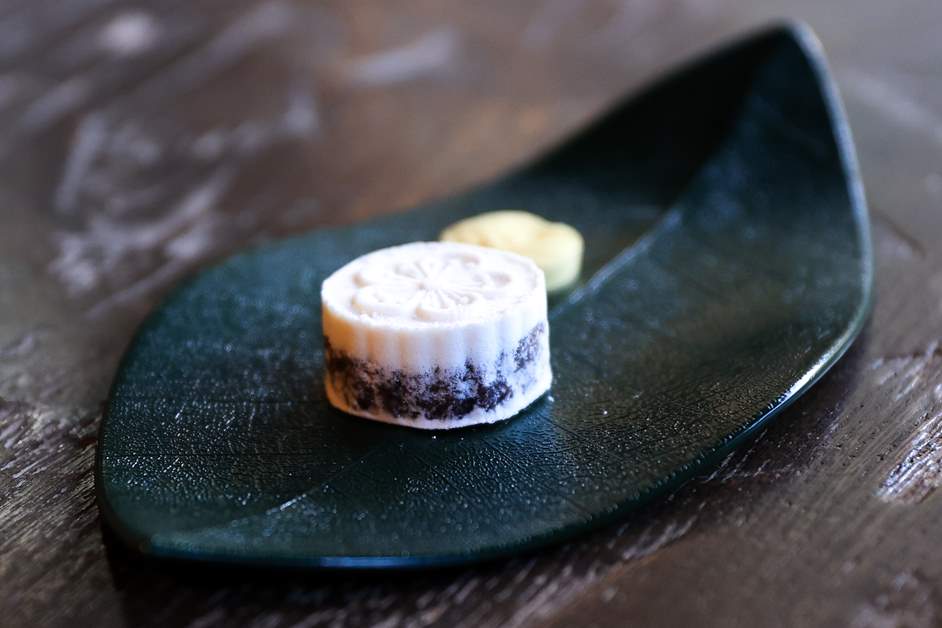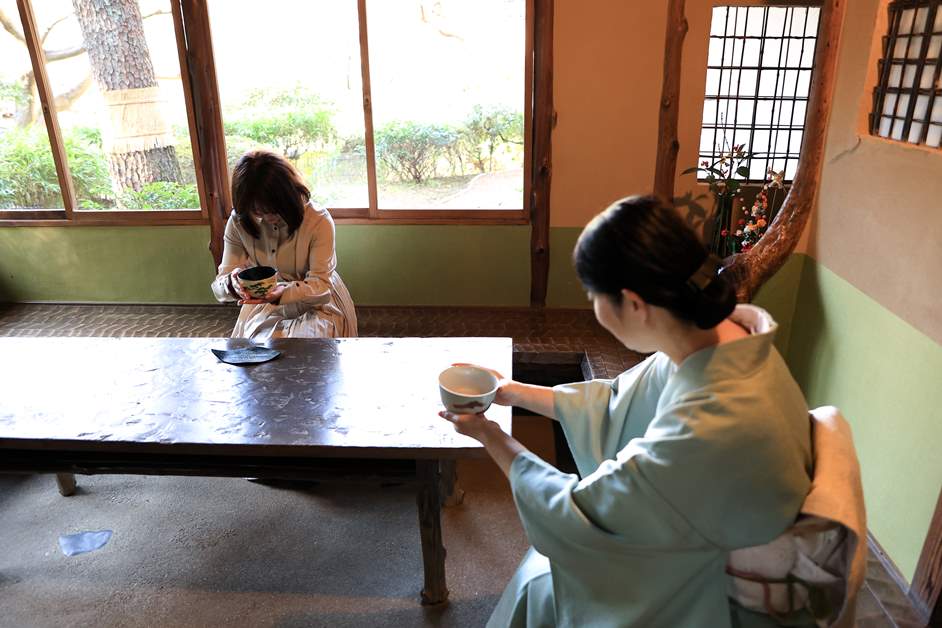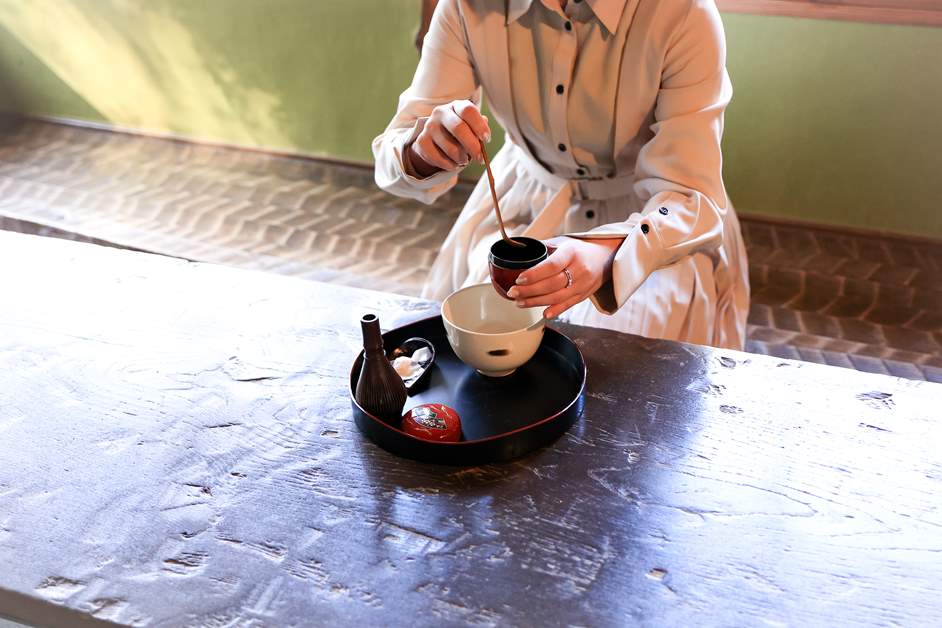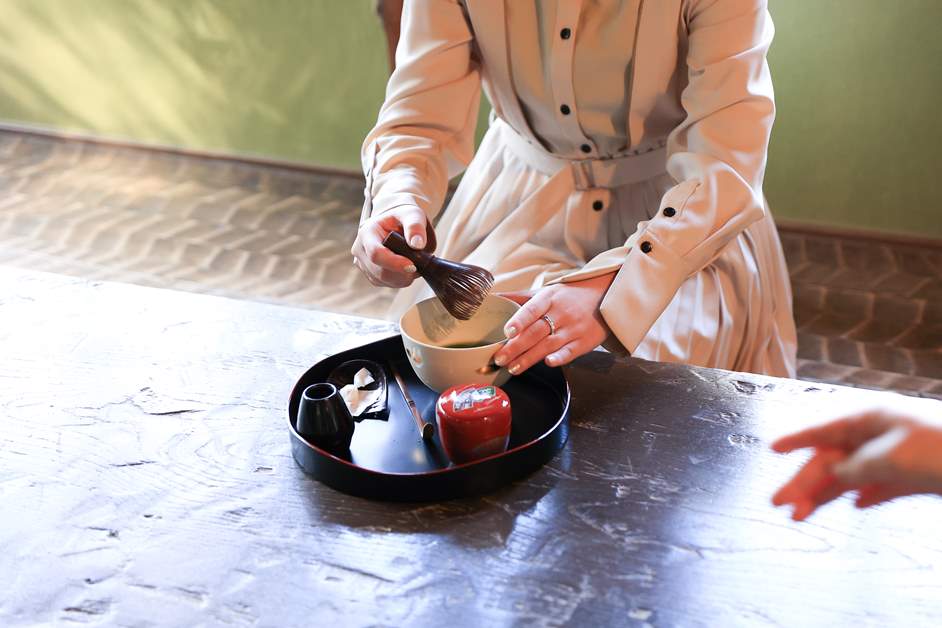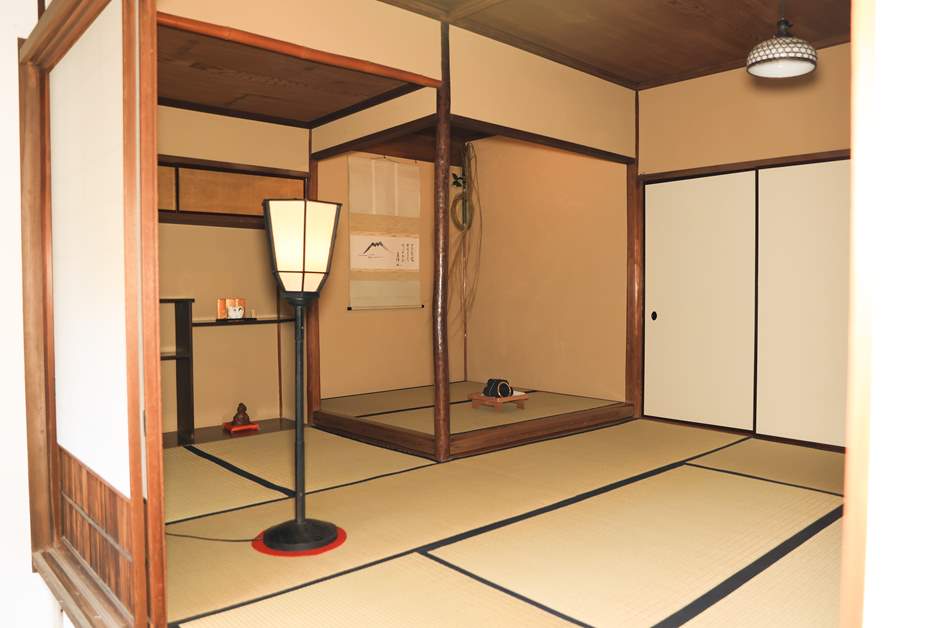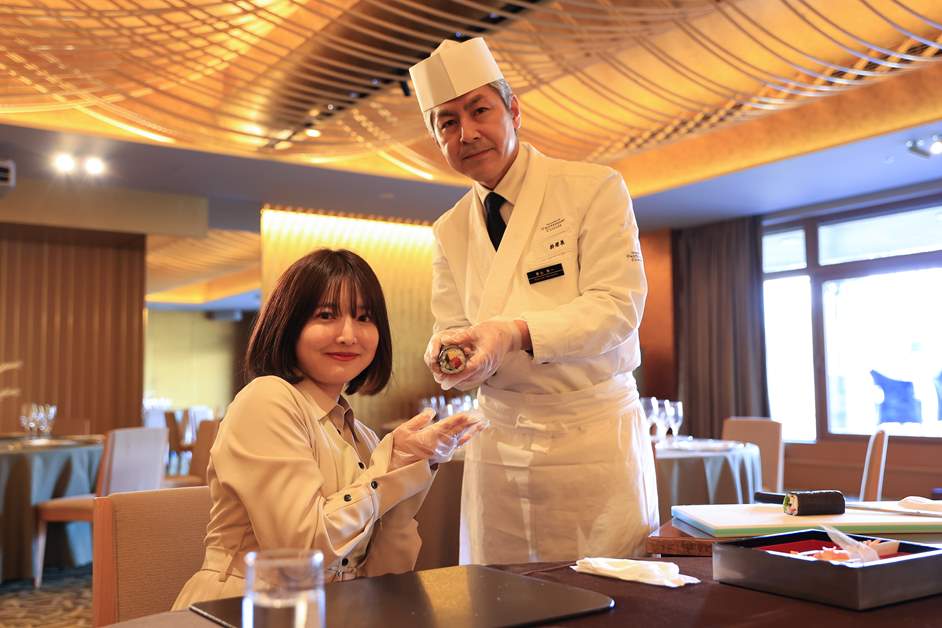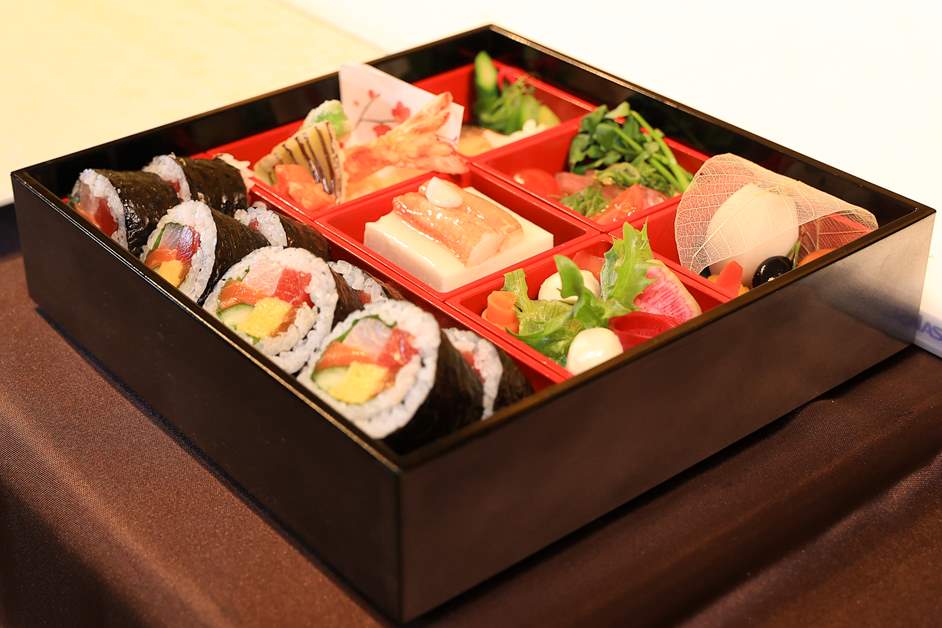Experience Japanese tea ceremony and hand-rolled sushi. A special moment to interact with "Japanese culture" at Happo-en.
Happo-en, with its vast Japanese garden of about 33,000 square meters, celebrated its 80th anniversary in 2023. The Japanese garden, dating back to the Edo period, is open to everyone to explore and enjoy the changing scenery throughout the seasons. Continuing its tradition of conveying Japanese beauty and tradition, Happo-en has introduced a new plan called "Japanese Cultural Experiences." While there are several different types of activities available through this plan, we will be introducing the ones most popular among international visitors: the "Tea Ceremony Experience" and the "Hand-rolled Sushi Experience."
Immerse yourself in the world of the "Tea Ceremony" in the garden.
Happo-en, known for managing wedding venues and restaurants in Shirokanedai, Minato-ku, is conveniently located just a minute's walk from Shirokanedai subway station. It's approximately a 5-minute taxi ride from major stations like Meguro Station and Shinagawa Station. Pass through the main gate first and head towards the main building.
The lobby of the main building, which welcomes many guests, has a chic and modern atmosphere. Once you've deposited your belongings at the cloakroom, it's time to start the experience.
The iconic Japanese garden at Happo-en is a strolling garden centered around a pond where approximately 300 colorful koi fish swim. With a history of about 400 years, elements like the flow of the stream and slopes remain as they were in the past. While specialized gardeners are always at work maintaining the garden, it is the employees of Happo-en who take turns sweeping the fallen leaves every morning.
While strolling through the garden, we headed to "Yume-an," the venue for the "Tea Ceremony Experience." This tea house, situated by the pond, was originally built by silk trade merchant Heihachi Tanaka and later relocated from Yokohama by entrepreneur Fusanosuke Kuhara.
This time, we had the opportunity to casually experience the tea ceremony with the "Tea Ceremony Experience" plan. It's no problem if you are unfamiliar with the etiquette and the use of utensils! The staff at "Yume-an" will provide detailed explanations, even if you don't have prior knowledge of the tea ceremony.
The etiquette of making tea is called "Otemae." The staff at "Yume-an" follow the Urasenke school of tea ceremony, which was founded by Sen no Rikyu. You are sure to be captivated by their demonstration of "Otemae."
While the staff is preparing the tea, you'll be served sweets. The white sweet is made from rice flour, while the yellow sweet is made from wasanbon sugar, known for its refined sweetness. Savor them by letting them melt in your mouth without chewing.
As you learn the etiquette from the staff, you'll enjoy the tea they've prepared for you. Since you will have already had some sweets, the bitterness of the matcha will stand out. It is recommended that you make a sound as you sip up the last bit of tea.
Next, you'll prepare the tea yourself. Scoop about 2 teaspoons of matcha with a tea scoop called a "chashaku" into the tea bowl. If there's too little matcha, you may have difficulty foaming it up.
Once you've poured the hot water, you'll use a bamboo whisk called a "chasen" to prepare the tea. Hold the tea bowl with your left hand and use the "chasen" in your right hand to mix the matcha. During this process, the key is to snap your wrist back and forth to create an "M" shape in the bowl.
Once the tea has foamed, you can follow the etiquette you learned earlier to enjoy the tea. Drinking tea that you prepared yourself adds a special touch! Enjoying the tea while gazing upon the garden is truly a blissful moment.
While the garden is of course beautiful during the season of cherry blossoms or autumn leaves, there's a unique charm in enjoying tea as you gaze upon the barren winter garden. In fact, we might even recommend the winter season for your visit as the crowds will thin out compared to the crowded peak seasons. In addition, February is the perfect time for viewing the plum blossoms in the garden, as they will be in full bloom.
This time, we enjoyed tea in a seated style called "Ryureiseki," but you can also experience the tea ceremony in a tatami-floored "Hiroma" (large room). Additionally, for groups, there are options with takeaway experience kits including tea utensils and matcha, or plans where the tea ceremony is integrated into social events or meetings. You have the flexibility to customize the experience according to your preferences.
The "Tea Ceremony Experience" is immensely popular not only among tourists but also among corporate executives visiting Japan for training, students on short-term study abroad programs, and international married couples. Guests come to participate not only from Asia and the West, but from Central Asia and Central/South America as well. It seems that many individuals, regardless of their background, are interested in experiencing the Japanese aesthetic sense of "Wabi-Sabi" through the tea ceremony.
Follow the guidance of the instructor and enjoy tasting hand-rolled sushi that you made yourself!
After the "Tea Ceremony Experience," the next activity held in the main banquet hall is the "Hand-rolled Sushi Experience" group activity. Happo-en's Japanese cuisine chef will provide instructions on making hand-rolled sushi using fresh ingredients. On this day, the ingredients included shiso (perilla), kanpyo (dried gourd strips), tamago (sweet omelet), cucumber, salmon, yellowtail, and tuna, for a total of 7 types of ingredients.
First, they will demonstrate the process in front of you. They will evenly spread the sushi rice, about two small bowl's worth, on the fragrant Saga seaweed. They say the key is to spread it gently and softly, making it light and fluffy.
They will then place the ingredients in order, placing their thumb on the bamboo rolling mat, and rolling it towards themselves. They will then gently squeeze it to shape it into a clean roll.
Once it's rolled, they then cut it into bite-sized pieces using a knife moistened with water. After observing the process and learning the steps, with guidance, you can try making hand-rolled sushi on your own.
Spread the rice evenly, place the ingredients on top, and roll it up – it may seem simple at first glance, but you won't be able to roll it up neatly if you don't understand the key to each step!
Once you've finished your hand-rolled sushi, take a commemorative picture! Many visitors from abroad have reported that it was a wonderful experience.
In the lunch plan, hand-rolled sushi is served as part of a Japanese bento box along with other side dishes.
While the fresh ingredients play a role, you can't beat the taste of sushi that you've rolled yourself! Indulge in the luxury of enjoying a Japanese lunch in a banquet hall overlooking a Japanese garden.
Flexible arrangements are possible for those with allergies or religious constraints, such as using non-seafood ingredients in sushi. In addition to the "Japanese cultural experiences" like the "Tea Ceremony" and "Hand-rolled Sushi" mentioned earlier, they also offer group experiences such as an "Incense Ceremony" and "Japanese Drumming." Moreover, if there's a specific experience not listed in the plans that visitors are interested in, Happo-en is willing to discuss and customize experiences based on individual preferences. While Happo-en had already been individually coordinating Japanese cultural experiences upon request in the past, they began offering these officially planned activities starting from the spring of 2023 due to growing demand.
Happo-en offers various "Japanese cultural experiences" in the spirit of Japanese hospitality, leveraging the expertise they have gained from hosting weddings, banquets, parties. We have received significant positive feedback from participants, with many expressing that each experience was enjoyable and created wonderful memories. It also seems that Happo-en is planning on developing new activities in the future. If there's a Japanese cultural experience you'd like to try, why not inquire and see what's available?
Happo-en offers various "Japanese cultural experiences" in the spirit of Japanese hospitality, leveraging the expertise they have gained from hosting weddings, banquets, parties. We have received significant positive feedback from participants, with many expressing that each experience was enjoyable and created wonderful memories. It also seems that Happo-en is planning on developing new activities in the future. If there's a Japanese cultural experience you'd like to try, why not inquire and see what's available?
"Happo-en"
1-1-1 Shirokanedai, Minato-ku, Tokyo
https://www.happo-en.com
※Inquiries about Japanese cultural experiences can be made through the official website below.
https://www.happo-en.com/event/bunka_taiken/
1-1-1 Shirokanedai, Minato-ku, Tokyo
https://www.happo-en.com
※Inquiries about Japanese cultural experiences can be made through the official website below.
https://www.happo-en.com/event/bunka_taiken/




